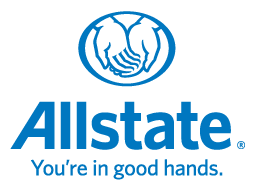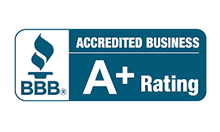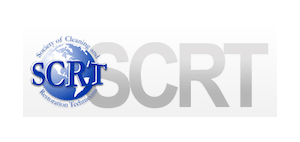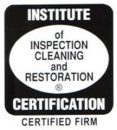Did you know that mold can trigger a wide range of health issues, affecting not just your respiratory system but also your overall well-being? Mold sickness is a real concern that can cause significant discomfort and pose serious health risks if left untreated. Understanding the signs and symptoms of mold sickness is crucial for early detection and prevention.
Key Takeaways:
- Mold sickness can manifest as respiratory issues, allergies, headaches, fatigue, and difficulty concentrating.
- Common signs of mold sickness include coughing, wheezing, shortness of breath, nasal congestion, sneezing, and itchy eyes.
- Individuals with weakened immune systems and vulnerable populations, such as infants and the elderly, are at higher risk of mold-related illness.
- Diagnosing mold sickness can be challenging and may require specialized tests.
- Treatment involves managing symptoms, while remediation focuses on eliminating the source of mold.
Understanding Mold Exposure and Its Health Implications
Mold exposure can have significant health effects on individuals. It occurs when people come into contact with mold spores through inhalation, ingestion, or skin contact. Mold can thrive in damp and humid environments, such as basements, bathrooms, and kitchens.
When mold spores are inhaled, they can cause a range of respiratory problems. This includes coughing, wheezing, and asthma attacks. Prolonged exposure to mold can also lead to chronic sinus infections or fungal lung infections, especially in individuals with weakened immune systems.
Allergic reactions to mold are also common. Symptoms can manifest as nasal congestion, sneezing, itchy eyes, and skin rashes. These reactions can vary in severity depending on the individual’s sensitivity to mold.
It is important to understand the health implications of mold exposure in order to take appropriate measures to prevent or mitigate its effects. By being aware of the potential health risks, individuals can create a safer and healthier environment for themselves and their families.
What are Signs of Mold Sickness?
Physical signs of mold sickness can manifest in various ways. One of the most common symptoms is respiratory issues, including coughing, wheezing, and shortness of breath. These symptoms can be triggered by the presence of mold spores in the air, which can irritate the respiratory system. Allergies are another key indicator of mold sickness. These can manifest as nasal congestion, sneezing, and itchy eyes.
In addition to respiratory and allergic symptoms, mold sickness may also cause other physical manifestations. Many individuals report experiencing headaches, fatigue, and skin rashes, which can be indicative of mold exposure. Difficulty concentrating or remembering things may also occur as a result of mold sickness.
If you are experiencing any of these physical symptoms and suspect mold exposure, it is essential to consult with a healthcare professional. A medical diagnosis is crucial in determining whether your symptoms are truly related to mold sickness. A healthcare provider can conduct a physical examination and, if necessary, order specialized tests to diagnose mold illness.
Populations Most Vulnerable to Mold-Related Illness
Certain populations are more susceptible to mold-related illness. Individuals with weakened immune systems, such as those with HIV/AIDS, cancer patients undergoing chemotherapy, or organ transplant recipients taking immunosuppressant medications, are at higher risk. Mold can cause severe respiratory infections or systemic fungal infections in these individuals. Additionally, infants, young children, and the elderly may be more vulnerable due to their developing or weakened immune systems, respectively.
Exposure to mold can have serious health implications for vulnerable populations. Immune-compromised individuals, including those with HIV/AIDS, cancer patients undergoing chemotherapy, or organ transplant recipients taking immunosuppressant medications, are particularly susceptible to mold-related illness. Mold can lead to severe respiratory infections or systemic fungal infections in these individuals. Infants, young children, and the elderly are also at higher risk due to their developing or weakened immune systems.
It’s important for vulnerable populations to take precautions and minimize their exposure to mold. This can involve ensuring proper ventilation, reducing moisture levels in the home, and promptly addressing any water damage or leaks. Regular cleaning and maintenance of the HVAC system can also help prevent mold growth. If mold-related symptoms are present, it’s crucial to seek medical attention promptly to receive appropriate treatment and prevent further complications.
Diagnosing Mold Sickness
Diagnosing mold sickness can be challenging due to the overlap of symptoms with other respiratory conditions or allergies. When you suspect mold exposure, it is important to seek medical advice and undergo proper testing for accurate diagnosis. A healthcare professional will assess your medical history, conduct a thorough physical examination, and may order specific tests to confirm mold exposure and determine the extent of the illness.
Medical tests for mold sickness diagnosis may include:
- Blood tests for mold-specific antibodies: These tests can detect the presence of antibodies produced by your immune system in response to mold exposure. Elevated levels of specific antibodies indicate a possible mold-related illness.
- Skin prick tests for mold allergies: In this test, small amounts of mold allergens are introduced to your skin through tiny pricks or scratches. If you are allergic to mold, a small raised bump or redness may appear at the injection site.
- Imaging studies to assess lung function: Imaging techniques such as chest X-rays or CT scans can help evaluate the condition of your lungs and identify any abnormalities caused by mold-related respiratory problems.
To assist in an accurate diagnosis, provide detailed information to your healthcare professional about your potential mold exposure and the symptoms you are experiencing. This information will help guide them in determining the appropriate medical tests and treatment plan.
It is crucial to consult a healthcare professional experienced in mold sickness diagnosis and treatment to ensure proper evaluation and management of your condition.
Treatments and Remediation for Mold Exposure
Treating mold sickness focuses on alleviating symptoms and addressing any underlying respiratory or allergic conditions. In some cases, over-the-counter medications such as antihistamines or nasal sprays may help manage symptoms like nasal congestion and sneezing. For individuals with more severe symptoms, prescription medications like inhalers or oral corticosteroids may be recommended to reduce inflammation and relieve breathing difficulties.
If mold exposure is confirmed, it’s crucial to remediate and eliminate the source of mold to prevent further health issues. This may involve repairing any leaks or moisture problems in the affected area to prevent mold growth. Improving ventilation by using fans or dehumidifiers can help reduce humidity levels, creating an inhospitable environment for mold.
In cases where the mold infestation is extensive or difficult to reach, it may be necessary to enlist the help of mold remediation professionals. These experts are trained in safely removing and disposing of mold-infested materials while minimizing the spread of mold spores.
Once the mold has been removed, it’s essential to take steps to prevent future mold growth. This includes regular cleaning and maintenance to prevent moisture buildup, such as wiping down surfaces prone to condensation or water spills. Proper ventilation, especially in areas like bathrooms and kitchens, can help reduce humidity and improve airflow, creating a less favorable environment for mold growth.
Eliminating mold spores from the indoor environment is crucial for reducing the risk of mold-related health issues. By implementing these treatment and remediation measures, individuals can effectively manage mold exposure and create a safer and healthier living environment.
Preventing Mold Growth and Minimizing Health Risks
Mold prevention is essential in maintaining a healthy indoor environment and reducing the risk of mold-related health issues. Controlling moisture levels in the home is the first step towards preventing mold growth. Promptly addressing any leaks or water damage, such as from plumbing issues or roof leaks, is crucial. Moisture-prone areas like bathrooms, basements, and kitchens should be equipped with dehumidifiers to remove excess humidity and prevent mold from thriving.
Proper ventilation is also vital in preventing mold. Ensuring that there is adequate airflow throughout the house helps reduce moisture accumulation, making it less conducive for mold growth. Opening windows to increase cross ventilation and using exhaust fans in bathrooms and kitchens can help achieve good airflow. Regularly cleaning and maintaining the HVAC system, including replacing filters, is another effective way to minimize mold growth and maintain indoor air quality.
In addition to controlling moisture and improving ventilation, taking proactive measures to improve indoor air quality can further minimize health risks associated with mold exposure. Using high-efficiency air filters in HVAC systems can help capture mold spores and other airborne pollutants, reducing their presence in the indoor environment. Regularly cleaning surfaces that are prone to moisture, such as shower curtains, window sills, and bathroom tiles, can also prevent mold growth.
Ensuring adequate ventilation in bathrooms and kitchens is crucial as these areas are particularly prone to moisture buildup. Installing and properly maintaining exhaust fans in these spaces can help remove excess humidity and prevent mold growth. It’s also essential to promptly address any plumbing issues, such as fixing leaks or repairing broken pipes, to prevent water accumulation and subsequent mold growth.
By following these preventive measures, individuals can significantly reduce the risk of mold growth and minimize health risks associated with mold exposure. Maintaining a clean and dry environment, controlling moisture levels, and improving indoor air quality all contribute to a healthy living space.
Conclusion
Mold sickness can manifest in various ways, including respiratory issues, allergies, headaches, and fatigue. Recognizing the signs of mold sickness is crucial for early detection and prevention. It is especially important for vulnerable populations, such as individuals with weakened immune systems or the elderly, who are at higher risk of mold-related illness.
Diagnosing mold sickness can be challenging, but healthcare professionals can employ a combination of medical history, physical examination, and specialized tests to make an accurate diagnosis. Managing symptoms is an essential aspect of treatment, while remediation involves eliminating the source of mold.
To minimize health risks associated with mold exposure, maintaining a healthy indoor environment is paramount. This includes practicing effective prevention methods, such as controlling moisture levels, repairing leaks promptly, and improving ventilation. Regular cleaning and ensuring proper air filtration also contribute to reducing the risk of mold growth and maintaining good indoor air quality.


















